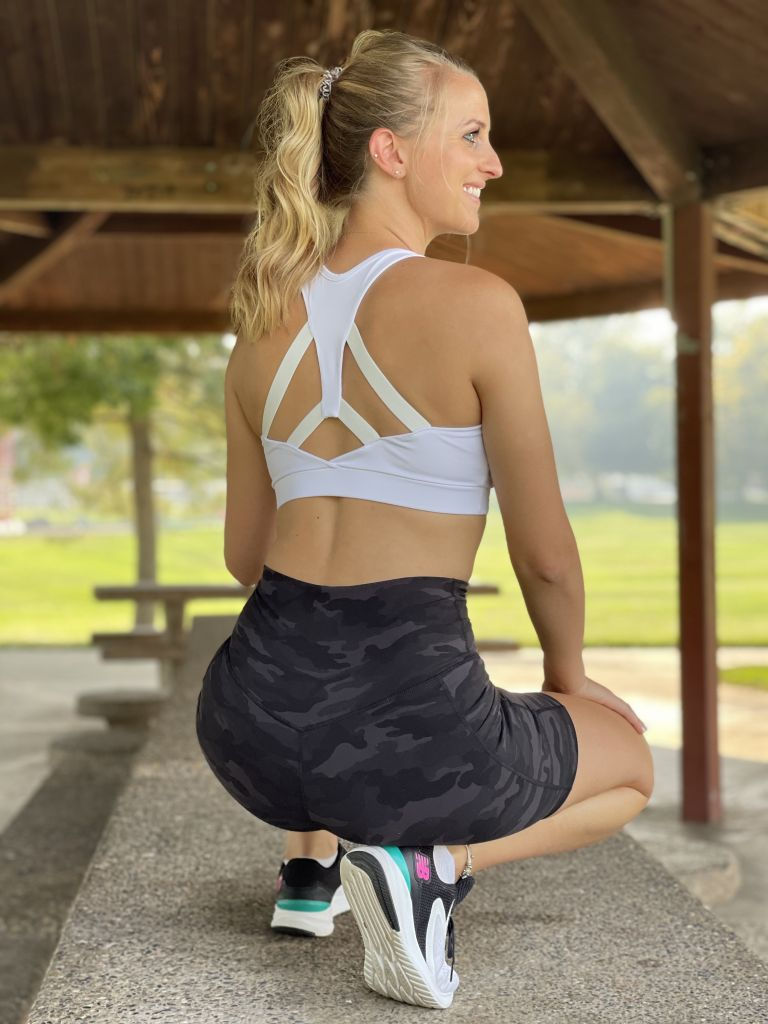The Secrets to Getting Toned
- April Hamilton
- Aug 3, 2022
- 4 min read
Updated: Jul 14, 2025

In my 5+ years of coaching and training women, there seems to be more confusion than ever behind what it means to “tone up”. So in today’s post, we’re going to be diving into all the secrets to getting toned.
A lot of women who are already lean think they need to lose 5-10 pounds to achieve that “toned” look. But more times than not, they don’t actually need to lose 5-10 pounds to get there, what they actually need is to strength train and gain 5-10 pounds of muscle.
Sometimes this can be a difficult concept to grasp because women tend to have a very specific goal weight in mind and naturally, may feel frustrated when they see the scale go up as soon as they start working out and strength train. It’s important to know that when you strength train, body weight may stay the same or even go up a couple pounds, as a result of building muscle – but this is perfectly OK because but the end result will be what you’re looking for.
Having a toned body is typically defined by women as wanting to look a certain way – a more “fit” look, with visible muscle definition primarily in the arms and legs and core. To do this, you must first have a solid foundation of muscle in the first place. All too often, I coach women who want to lose weight but also want to have a toned body. However, if they don’t already have a solid foundation of muscle to begin with, there will be nothing to “show” for once they lose that last 5-10 pounds.
So how is this toned look achieved? My advice is to follow one of two routes, depending on your current physique, overall dieting history and what your goals are.
While it is possible to simultaneously build muscle and lose fat (via body recomposition eating at or slightly above maintenance calories), this process becomes more difficult if you are dieting and eating in a calorie deficit. The exception to this would be for those who are brand new to strength training; this group of people are more likely to achieve both fat loss and muscle building in a calorie deficit compared to someone who is an experienced lifter, or someone who has been exercising for a long period of time already.
It’s also important to know the very basics of energy balance:
Fat loss: calories in < calories out (calorie deficit)
Weight maintenance: calories in = calories out (energy balance)
Weight and/or muscle gain: calories in > calories out (calorie surplus)
If your goal is fat loss, it will be relatively difficult for you to build muscle. Building muscle requires an appropriate amount of energy and calories which of course, is not realistic when you are eating in a deficit. You can however maintain the amount of muscle you do already have during a fat loss phase through resistance training and a sufficient intake of protein – but that’s another topic for another time.
On the other side of the equation, it will be much easier for you to build muscle and get stronger by eating at or slightly above your maintenance calories (I use the word “easier” with caution because building muscle is not an easy or fast process regardless of your training and nutrition). If we review the energy balance key from above, you will know that if you’re eating at or above maintenance, your goal is NOT to lose weight.
So what does all of this mean for you and your goals?
The simple answer would be to get a clear picture of what exactly you’re wanting to achieve.
If you feel like you already carry a healthy, solid amount of muscle and want to “lean down” a little to show off a more defined physique, you’re probably safe to start a conservative calorie deficit so you can slowly shed that extra layer of body fat and have those muscles you’ve worked so hard to build “pop out”.
On the flip side, if you are someone who has more of a “skinny fat” physique (I hate that term BTW but it’s what a lot of women relate to), then you would probably benefit from putting a pause on weight loss and spend some time eating at maintenance and shift your focus to building muscle.
There’s nothing wrong with having a bit more patience with yourself, putting in the time and work to build a strong physique and then doing a small calorie deficit to lean out a bit. But if you start dieting without much muscle to begin with, you will likely find that you won’t end up looking more toned at all and in reality, you’ll likely just become a smaller version of yourself (which is fine too if that’s what you’re going for!)
If you’re curious about what your calorie and macro targets should be for your body composition goals, I highly recommend checking out my nutrition coaching or getting a personalized macro calculation.









Comments